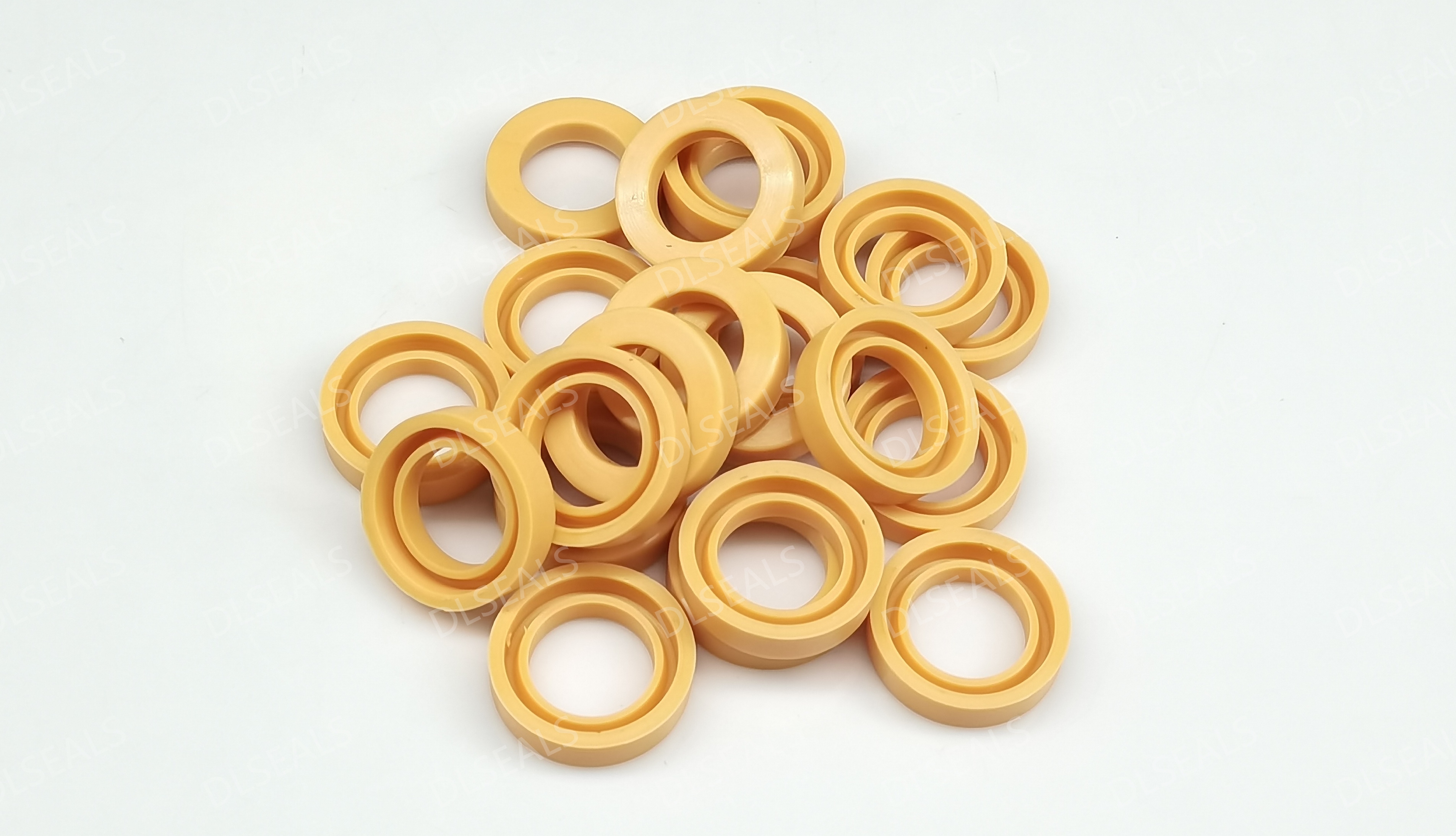
Rubber seals are widely used in various industrial fields and are known for their excellent sealing performance, wear resistance and elasticity. When selecting rubber seals, pressure resistance is an important consideration because it directly affects the service life and overall performance of the seal. Different rubber materials vary in their ability to withstand pressure, so understanding these differences is critical to choosing the right seal. This article will discuss the compression resistance of several common rubber materials to help users make the best choice.
1. Overview of rubber seal materials
The pressure resistance of a rubber seal depends on the properties of the rubber material used. Common rubber materials include natural rubber (NR), synthetic rubber (such as nitrile rubber (NBR), fluorine rubber (FKM), silicone rubber (VMQ) and polyurethane rubber (PU), etc.). Each material has unique physical and chemical properties that affect its ability to withstand pressure and its range of applications.
2. Analysis of the compression resistance of rubber materials
Natural rubber (NR)
Characteristics: Natural rubber has excellent elasticity and tensile strength and can withstand compressive loads to a certain extent. Its pressure resistance is relatively moderate and is generally suitable for applications where pressure is not high.
Compression resistance: Natural rubber is generally less resistant to compression than synthetic rubber, but its advantages include excellent resilience and abrasion resistance. Suitable for low pressure environments such as automotive seals and light industrial applications.
Nitrile rubber (NBR)
Properties: Nitrile rubber is known for its excellent resistance to grease and fuel, as well as its good resistance to wear and pressure. It is usually used in demanding sealing environments.
Pressure resistance: Nitrile rubber has strong pressure resistance and is suitable for medium pressure seals, such as hydraulic system seals, fuel system seals, etc. Its good compression permanent deformation performance enables it to maintain a stable sealing effect under high pressure conditions.
Fluorine rubber (FKM)
Characteristics: Fluorine rubber has excellent high temperature resistance and chemical stability, and is also very strong in pressure resistance. It can maintain good sealing performance in extreme environments.
Pressure resistance: The pressure resistance of fluorine rubber is better than that of many other rubber materials, and it is suitable for sealing applications with high temperature, high pressure and chemical media, such as seals in aerospace and chemical equipment. Its high pressure resistance makes it suitable for harsh working conditions.
Silicone rubber (VMQ)
Characteristics: Silicone rubber is known for its excellent high and low temperature resistance and biocompatibility, but its ability to withstand pressure is relatively weak. Mainly used in applications requiring high or low temperature stability.
Pressure resistance: Silicone rubber has low pressure resistance, but due to its stability under extreme temperatures, it is suitable for sealing in high-temperature environments, such as baking equipment and high-temperature furnaces. Its compression permanent deformation is large and is not suitable for high-pressure applications.
Polyurethane rubber (PU)
Characteristics: Polyurethane rubber has good wear resistance and high strength, and has strong pressure resistance. It is widely used in applications requiring high wear resistance and high load-bearing capacity.
Compression resistance: The compression resistance of polyurethane rubber is at a high level among rubber materials and is suitable for use in hydraulic cylinder seals and heavy-duty industrial equipment. It can maintain a good sealing effect in high-pressure environments and has strong durability.
3. Strategies for Choosing Suitable Rubber Materials
Understand application requirements
Pressure Requirements: Selecting the appropriate rubber material depends on the actual pressure requirements of the application. High-pressure environments require materials with strong pressure resistance, such as fluororubber or polyurethane rubber.
Working environment: Consider the working environment of the seal, such as temperature, chemical media, etc., and select a rubber material that is suitable for it.
Material performance evaluation
Compression set: Check the compression set performance of different materials and choose materials that can maintain good sealing properties under long-term pressure.
Wear resistance: Choose materials with good wear resistance to increase the service life of the seal, especially under high pressure and high load conditions.
Consider cost and performance comprehensively
Cost-effectiveness: On the premise of meeting technical requirements, comprehensively consider the cost of materials and select materials with high cost-effectiveness.
Maintenance and replacement: Choosing durable materials can reduce maintenance frequency and replacement costs, improving the economics of the overall system.
4. Summary
The pressure resistance of rubber seals is an important indicator for evaluating their performance. Different rubber materials have significant differences in their pressure resistance. Natural rubber is suitable for low pressure environments, while nitrile rubber and fluoroelastomer are suitable for medium and high pressure applications. Although silicone rubber is slightly inferior in pressure resistance, it performs well in extreme temperatures; polyurethane rubber excels in high pressure and high wear resistance. Choosing the right rubber material based on specific application requirements can not only improve the performance of the seal, but also extend its service life and reduce maintenance costs. Understanding the characteristics and applicable scenarios of these materials will help users make wise choices and achieve the best sealing effect.
Post time: Sep-03-2024
